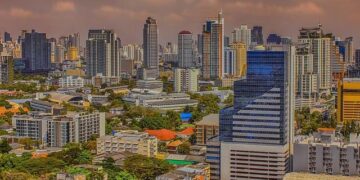Engineered Wetlands: A Green Approach to Water Purification in the Beijing-Tianjin-Hebei Corridor
As China confronts escalating water contamination issues, sustainable and innovative methods are critical to safeguarding this indispensable resource. Engineered wetlands—man-made ecosystems designed to replicate the natural cleansing functions of wetlands—have emerged as a viable and eco-friendly water treatment alternative. This approach holds particular promise for the Beijing-Tianjin-Hebei (BTH) region, where rapid industrialization and urban sprawl have severely compromised water quality.
Recent research published on ScienceDirect.com thoroughly examines the role of constructed wetlands in this area, evaluating their wastewater treatment capabilities, identifying operational challenges, and proposing enhancements to optimize their performance. This comprehensive analysis underscores how these bioengineered systems can significantly reduce pollution levels, improve aquatic environments, and support sustainable urban development. With metropolitan areas expanding rapidly across China’s landscape—as highlighted by recent reports on urban growth dynamics—the urgency for effective water management solutions like constructed wetlands has never been greater.
Assessing Constructed Wetlands’ Role in Water Quality Improvement within BTH
Constructed wetlands have become an essential tool for mitigating water pollution in the BTH region by harnessing natural purification mechanisms involving plants, microbes, and soil substrates. These systems offer a cost-efficient alternative compared to conventional wastewater treatment plants while delivering multiple ecological advantages:
- Economic Efficiency: Lower installation and operational expenses relative to traditional facilities.
- Biodiversity Enhancement: Creation of habitats that support diverse flora and fauna.
- Adaptability: Ability to be tailored according to varying pollutant loads and spatial constraints.
However, deploying these systems amid dense urban environments presents several obstacles:
| Obstacle | Consequences | Innovative Remedies |
|---|---|---|
| Limited Land Availability | Difficulties integrating large-scale wetland projects within cityscapes | Pioneering vertical wetland designs; utilizing rooftops for green filtration zones |
| Lack of Public Engagement | Skepticism or resistance toward wetland initiatives reduces project success rates | Cultivating awareness through educational campaigns; fostering community participation programs |
| Maintenance Challenges | Ineffective pollutant removal if upkeep is inconsistent or neglected | Implementing routine inspections; partnering with local authorities for sustained care efforts |
By confronting these hurdles with creative engineering solutions combined with active community involvement, constructed wetlands can fulfill their potential as vital components of regional water restoration strategies.
Navigating Environmental & Operational Barriers in Constructed Wetlands Deployment
The performance consistency of engineered wetlands is often influenced by fluctuating environmental factors such as seasonal temperature shifts that affect microbial activity crucial for breaking down contaminants. Additionally, gradual accumulation of heavy metals or excessive nutrients may saturate system capacity over time if not properly managed. Urban land-use conflicts further complicate site selection due to competing demands from infrastructure development.
To address these complexities effectively:
- Sophisticated Monitoring Technologies: Deploy sensor networks capable of real-time tracking pollutant concentrations enabling dynamic adjustments.
- Selecting Resilient Native Flora: Utilize indigenous plant species adapted specifically to local climate conditions which enhance contaminant uptake efficiency.
- Cohesive Multi-Stakeholder Collaboration: Forge partnerships among municipal agencies, academic institutions, environmental NGOs, and residents to share expertise & resources ensuring long-term sustainability.
Such integrative approaches will bolster system resilience against environmental variability while maximizing purification outcomes across densely populated industrial zones.
Progressive Techniques Elevating Urban Wetland Efficiency Amidst Growing Cities
Urban engineered wetlands are increasingly recognized not only as effective wastewater filters but also as multifunctional green spaces contributing positively toward biodiversity conservation and climate adaptation goals within megacities like those found throughout BTH.
Key advancements include:
- Synthesis with Green Infrastructure Networks: — Combining constructed wetlands alongside bioswales, rain gardens,& permeable pavements enhances stormwater infiltration capacity while improving overall ecosystem services.
- Diversifying Plant Assemblages Using Local Species: This strategy strengthens ecosystem stability under climatic stressors while promoting native wildlife habitats.
- Real-Time Data Analytics & Adaptive Management:&Employing IoT-enabled sensors coupled with AI-driven analytics facilitates prompt interventions optimizing treatment efficacy continuously.</ li>
</ ul>These innovations contribute substantially not only toward improved effluent quality but also foster resilient urban landscapes better equipped against extreme weather events intensified by climate change trends documented globally since 2020.
A recent case study illustrates maintenance impacts on wetland functionality:
Maintenance Practice Effect on Treatment Performance < td >Periodic Sediment Extraction < td >Enhances hydraulic flow rates leading to superior contaminant removal < td >Nutrient Load Regulation Plans < td >Mitigates eutrophication risks thereby maintaining clearer waters < td >Community Education Workshops < td >Boosts public stewardship resulting in proactive care efforts Looking Ahead: Embracing Constructed Wetlands for Sustainable Water Management in BTH Region
In summary, a thorough evaluation reveals that engineered wetland systems hold significant promise amidst mounting pressures from population growth and industrial pollutants threatening freshwater resources across Beijing-Tianjin-Hebei’s metropolitan expanse.
While obstacles such as limited space availability,&&amp;amp;amp;amp;amp;amp;amp;; maintenance demands persist alongside challenges related to gaining widespread public endorsement,&&amp;amp;amp;; collaborative innovation between policymakers,&&;; engineers remains pivotal.<br />
Harnessing nature-based technologies like constructed wetlands offers a dual benefit: enhancing regional water quality sustainably while nurturing ecological awareness among communities.<br />
As severe weather events linked with climate change continue impacting Asia—including record-breaking rainfall episodes recently reported—integrated approaches combining technological advances with grassroots engagement will be essential.
Ultimately,the successful adoption of engineered wetland solutions could revolutionize how China addresses its complex urban water crises whilst championing environmentally harmonious practices aligned with global sustainability objectives.














